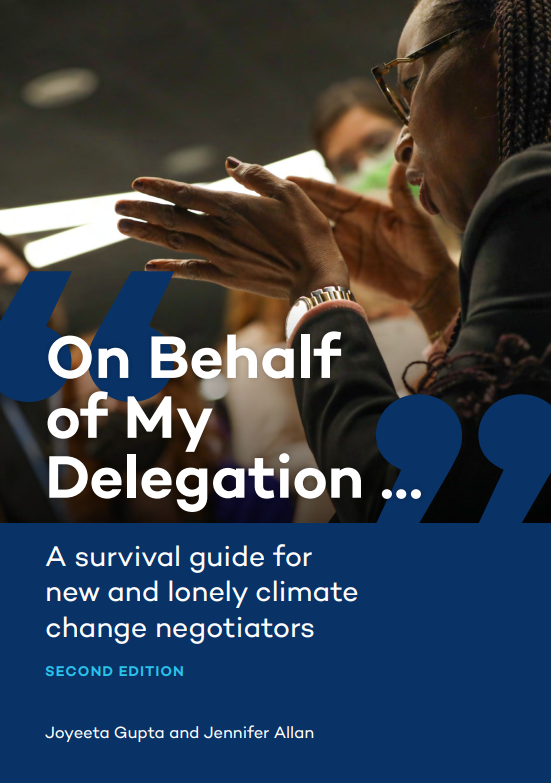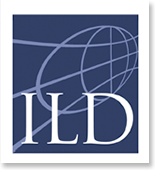It outlines key challenges negotiators face and suggests strategic approaches to tackle them. The book underscores the importance of deeply comprehending the negotiation process and procedural rules, continuously offering insightful tips for successful negotiations. Particularly, it proves extremely beneficial for negotiators from the Global South, who often attend climate COPs armed with limited resources and experience. It provides a well-balanced blend of theory, practical advice, research suggestions, and illustrative diagrams.
Overview
Part I — The Negotiating Context
1. The Climate Change Problem
Climate change is attributed to the accumulation of greenhouse gases such as carbon dioxide, methane, and nitrous oxide, which trap Earth’s infrared radiation, resulting in global warming. Significantly, there has been a substantial rise in these gases since 1750, setting the stage for an in-depth examination of the climate change challenge.
Subsequently, the section delves into the science behind climate change, emphasizing the stark human-driven changes in atmospheric, oceanic, and land temperatures. It highlights the rapid and widespread alterations in the atmosphere, ocean, cryosphere, and biosphere resulting from human-induced climate change. Importantly, the section underscores the wide scientific consensus as most peer-reviewed papers present robust evidence supporting human-caused climate change.
Lastly, it emphasizes the substantial effects of climate change on ecosystems and humans, highlighting a global temperature increase of approximately 1.15°C above pre-industrial levels. It emphasizes the importance of IPCC reports in showcasing up-to-date climate change science, including future temperature projections, shifts in climate zones, the escalation of extreme weather events, and rising sea levels. Consequently, the section depicts the severe impacts of climate change on both natural and human systems, underlining the urgency for immediate mitigation and adaptation.
2 The Evolution of the International Climate Regime
The international climate regime, guided by pivotal documents such as the UNFCCC, Kyoto Protocol, Doha Amendment, and Paris Agreement, drives global climate action. Key decisions are made through the United Nations Conference of the Parties (COP). Initially, the UNFCCC set the stage by emphasizing equity and differentiation between developed and developing countries. This approach allowed climate change strategies to be tailored based on historical responsibilities and current abilities.
Understanding these key documents and agreements is essential to navigate the complexities of the international climate regime. Moreover, building alliances with other delegations is crucial. Furthermore, effective communication and negotiation strategies are vital for participating in international climate negotiations and advocating for specific positions. Thus, these practical insights prepare readers for meaningful involvement in international climate discussions.
3. The Bodies in the Regime
Focuses on international climate bodies, elucidating their roles and dynamics. Given the complexity of climate change issues, the need for executing agencies becomes necessary, which results in numerous bodies under the UNFCCC. Working inter-seasonally, these entities aim to achieve consensus at the annual COPs. This section outlines key bodies under the UNFCCC, Kyoto Protocol, and Paris Agreement, such as the COP, CMP, CMA, and Secretariat, thus thoroughly understanding the climate regime framework. Additionally, it explores how negotiation and informal groups advance agendas, encourage collaboration, and build consensus.
Significantly, it distinguishes between formal and informal entities in the international climate regime, emphasizing their unique roles. Climate negotiations must grasp these diverse mechanisms. Ultimately, the section concludes with advice for equipping readers to interact effectively with these bodies and maneuver through international climate diplomacy.
4. The Rules of Procedure
Explores the complexities of international climate negotiation procedures. Initially, it provides a comprehensive overview of the legal and procedural framework guiding these negotiations, emphasising the role of procedural rules for orderly conduct. Additionally, it meticulously breaks down the specific procedural rules that significantly influence the negotiation process, offering readers a useful guide for engagement.
It brings to light significant issues within the procedural rules, clarifying their possible consequences on the negotiation process. It also touches on unresolved matters within the draft procedural rules, spotlighting areas of dispute that have impeded their acceptance. Furthermore, it underscores the critical difference between consensus and unanimity in the negotiation process, stressing the value of reaching consensus without the necessity for unanimous agreement.
Finally, this section transitions to explore the pivotal role of the President or Chair in the negotiation process. It highlights their significant responsibilities and contributions to the smooth conduct of negotiations. It thoroughly explains the key actors shaping the process by offering insights into the leadership dynamics in international climate negotiations.
5. State and Non-State Actors
Firstly, it discusses the exclusive role of states in negotiating multilateral treaties, the framework governing these negotiations, and the differences between Parties, non-parties, and non-voting observer participants. Furthermore, the Non-State Actors subsection delves into the roles of these diverse actors in climate change. They are classified into nine constituencies: BINGOs, ENGOs, RINGOs, IPOs, and TUNGOs.
This classification highlights their diverse contributions to negotiations. Notably, the section emphasizes the importance of these actors for progress on climate change and the need to understand their unique goals. It strongly advocates for collaboration with these actors to enrich the negotiation process. Lastly, the Tips and Tricks section provides practical advice for engaging with state and non-state actors in international climate change talks. It underscores the importance of understanding the UNFCCC, Kyoto Protocol, and Paris Agreement.
6. Coalitions in the Climate Change Regime
It underlines their significant role in shaping negotiations by streamlining discussions, consolidating resources, and enhancing negotiation leverage. This section investigates various coalitions formed around power dynamics, issues, formal institutions, and political constructs. Next, it examines the dynamics of major groupings under the Convention, specifically Annex I/B, Annex II, and non-Annex I countries. Their crucial role in the negotiation process is explored, providing insights into issue-based and political divisions within these blocs and across groups in non-Annex I countries. It is stressed that understanding these groups’ varied interests and perspectives is vital for comprehending the negotiation process’s implications.
Finally, the last part of section 6 gives practical advice for interacting with coalitions in the international climate change regime. It offers useful tips for navigating the complexities of the negotiation process, emphasizing understanding different coalitions’ subtleties and positions. It highlights the importance of collaborating with other national delegates and attending coordination meetings to stay informed about the developments in different negotiation rooms.
7. The G-77 and China
This section notably highlights the Global South’s characteristics and the group’s representation of developing nations. It then explores the group’s history since 1964, its evolving role in environmental negotiations, the necessity for effective strategies, and the possible effects of reduced unity. In the subsequent part, this chapter delves into the shared economic interests and joint negotiation power of the G-77 and China in the UN.
It highlights key concerns, including science and technology, international financial reform, and global cooperation. Additionally, it addresses challenges like divergent member interests and limited resources. This section provides strategies for developing negotiation skills within the G-77 and China. These include familiarizing oneself with the UNFCCC website, subscribing to email lists for groups/consultations, and liaising with NGOs. Furthermore, the section underlines the significance of female delegates networking for support and information.
Part II — Negotiating Skills
8. The Ideal Negotiator
It discusses the primary objective of negotiation: reconciling conflicts and achieving mutual outcomes. It notably emphasizes cultural sensitivity, active listening, diplomacy, analytic skills, technical knowledge, language skills, and self-discipline. Furthermore, it highlights how individuals, even from smaller countries, can have a significant impact through understanding negotiation processes and rules, balancing power disparities, and increasing personal influence. It highlights the need to fully understand the issues, clarify national interests and stances, recognize fixed and cautionary positions, and comprehend other countries’ positions. Also, it stresses the importance of understanding legal implications, diplomatic protocol, and social skills for effective international navigation.
9. The Disadvantaged Negotiator
Delves into the significant hurdles underprivileged negotiators face in international climate change talks. These challenges range from historical inequities to technical expertise, negotiation capacity, and scientific, policy, and stakeholder complexities. Firstly, the section outlines three key challenges. The initial challenge is that negotiators with limited resources struggle with information overload. To address this, it advises focusing on key issues, seeking domestic support, and establishing a clear stance before leaving the capital. Secondly, time constraints pose a significant problem for those with limited resources. As a solution, it recommends prioritizing crucial issues, focusing on main meetings, and participating in regional and coalition meetings for impactful contributions. Finally, the section tackles the critical issue of disadvantaged negotiating power. It offers strategies like building coalitions, identifying mutual benefits, and linking to other concerns.
10. Coping Strategies
Importantly, it provides practical advice and valuable insights to help negotiators navigate the challenges and complexities of the negotiation process. The first two subsections initially focus on understanding the negotiation process and building alliances and coalitions. Understanding the formal and informal aspects of negotiation enables effective participation and communication. Building alliances and coalitions with other countries and stakeholders can amplify influence and effectively advocate for a country’s priorities.
The next two subsections discuss leveraging support and resources and strategic decision-making. Specifically, engaging with domestic scientists, NGOs, industry, and other stakeholders can strengthen the negotiation position and enhance the capacity. Furthermore, effective decision-making processes, such as prioritizing critical issues, identifying areas of mutual benefit, and aligning negotiation strategies with national priorities, can lead to meaningful outcomes. Lastly, the final subsection guides managing challenges and setbacks. It offers practical strategies for resilience, adaptability, and maintaining a constructive approach in the face of obstacles.
11. Tips and Tricks for the Lonely Diplomat
Firstly, it addresses the challenge of negotiating alone and the importance of understanding the process. It strongly stresses the importance of comprehensively understanding the climate problem, the international climate regime, and the bodies involved. An in-depth knowledge of IPCC reports, climate change vocabulary, and the intricate relationship between mitigation, adaptation, loss, damage, and development is emphasized.
The subsequent subsections highlight several key areas. These include procedural rules, the roles of various actors, the art of coalition-building, the significant role of the G-77 and China, and the traits of an ideal negotiator. The emphasis is on understanding negotiation rules and actors’ roles, forming effective coalitions, appreciating the G-77 and China’s interests, and developing strategic thinking, effective communication, and adaptability.
Towards the end, the section covers the challenges and coping strategies for disadvantaged negotiators, along with helpful tips. It guides effective negotiation, including tactics like alliance-building, resource leveraging, strategic decisions, and setback management. Some practical tips involve maintaining a constructive approach, being aware of language nuances, and conserving energy for key negotiation sessions.
12. Conclusion: Beyond “on behalf of my delegation”
The conclusion chapter provides a comprehensive overview of the broader context and implications of the negotiation process, emphasizing the significance of looking beyond individual delegation interests and considering the collective impact of decisions on global climate action. It encourages negotiators to reflect on the broader implications of their actions and decisions, highlighting the interconnectedness of global climate challenges and the need for collaborative and inclusive approaches to address them effectively.




